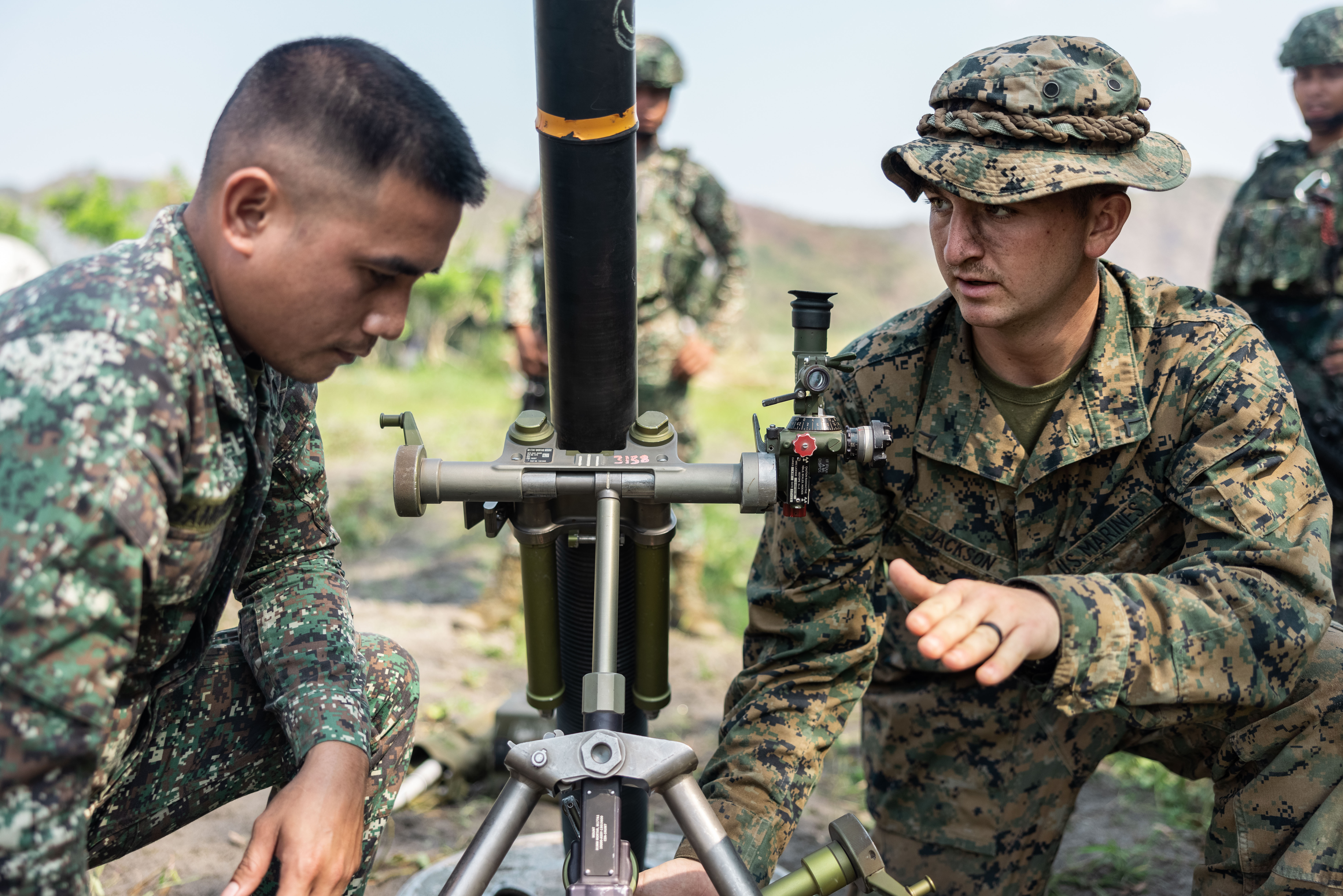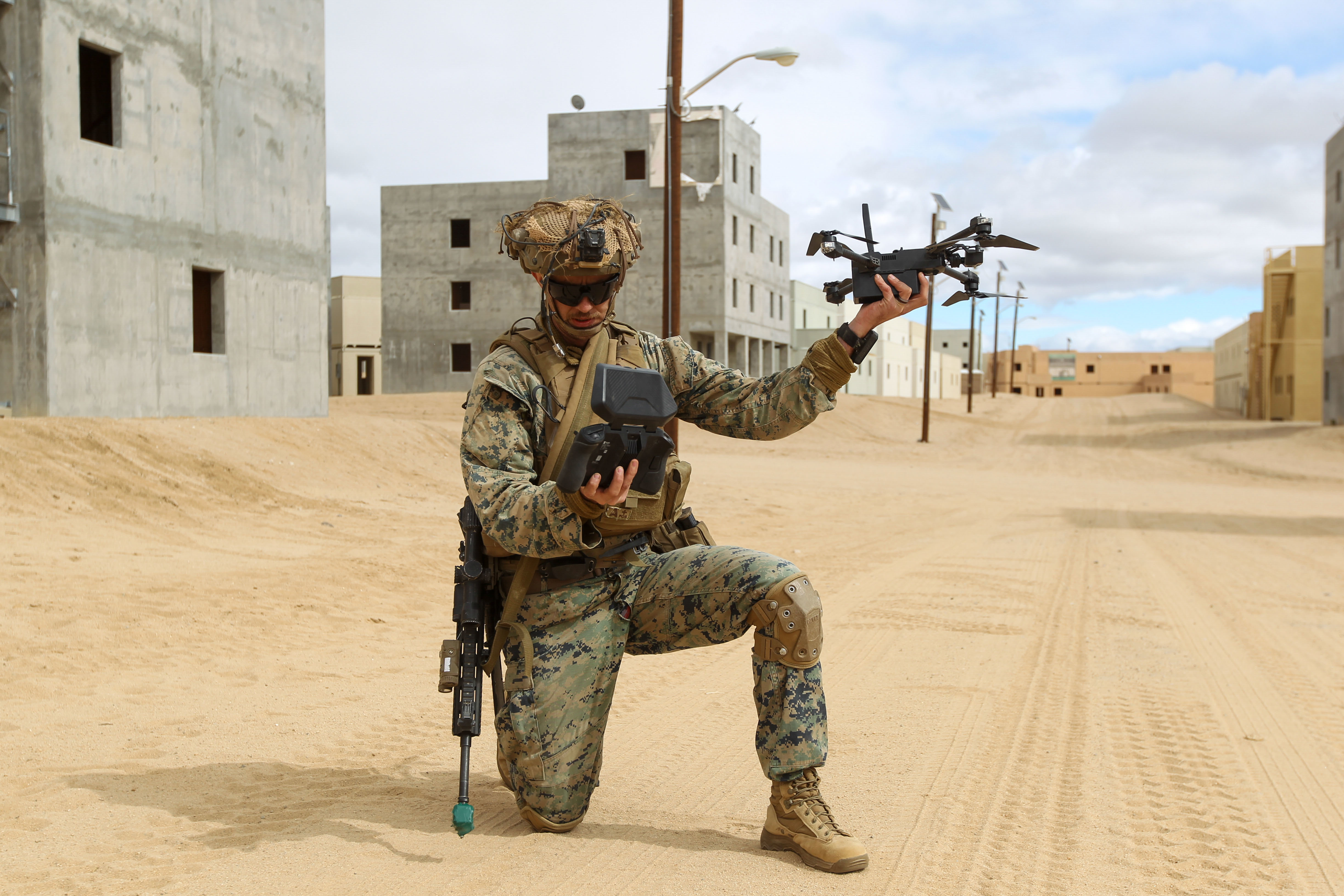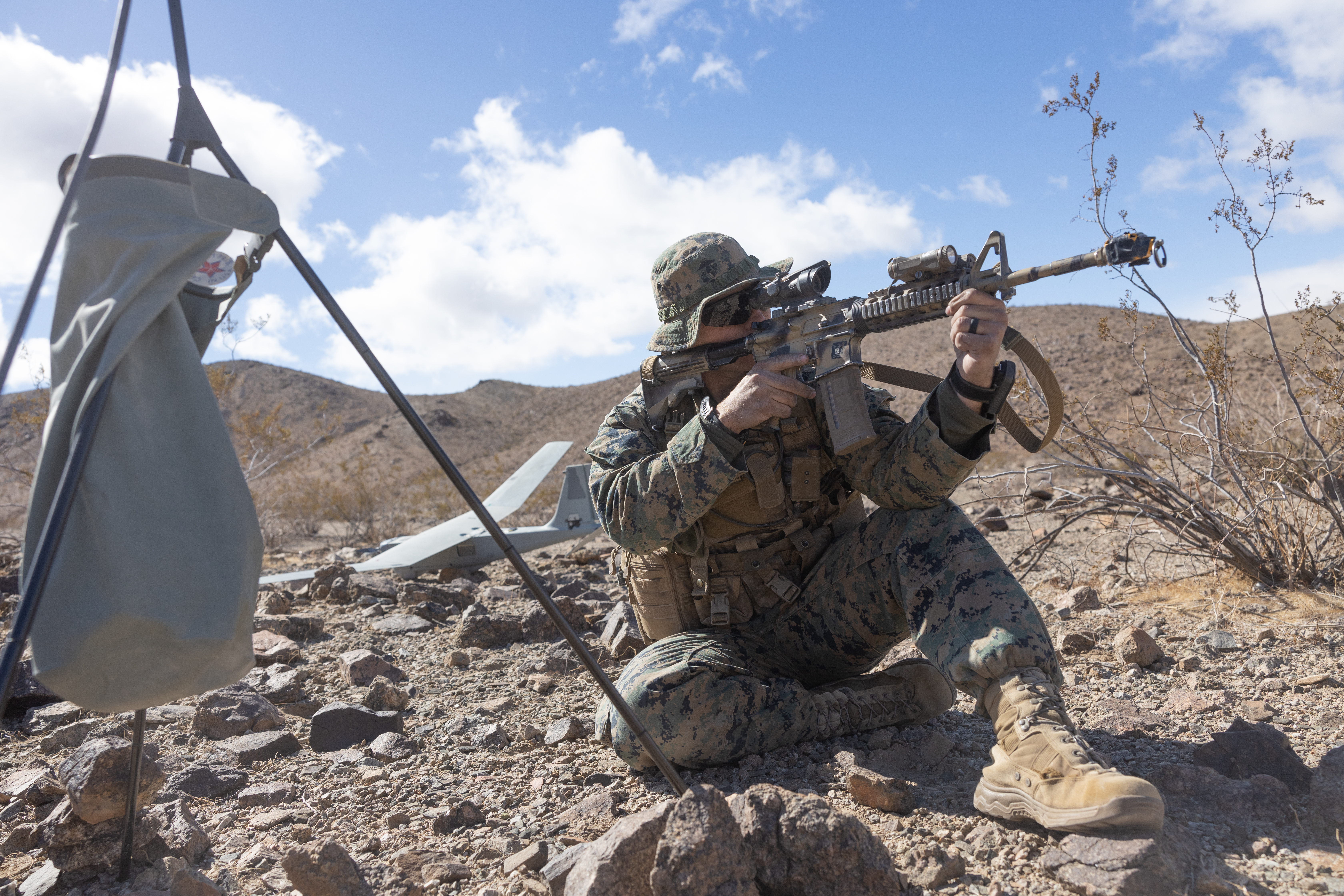
The Marine Corps is ready to use its new formation developed for the island-to-island fight of the future in a major joint exercise in the Indo-Pacific for the first time.
After conducting a service-level exercise in California and Arizona earlier this year, the Marine Corps will now scale that experimentation to the naval and joint force level during exercise Balikatan in the Philippines.
“Instead of developing a force … we are now employing, integrating and employing a capable Marine Littoral Regiment into current operations,” Maj. Gen. Jay Bargeron, the commanding general of 3rd Marine Division, told USNI News in an interview last month.
This year’s Balikatan – which kicked off this week with more than 17,500 Filipino, American, and Australian Marines, sailors, soldiers and airmen – is the largest iteration of the annual U.S.-Philippines exercise. It’s one of several drills the 3rd Marine Littoral Regiment out of Hawaii will participate in this year as it shifts from experimentation to operations.
“We have a capable headquarters now, so we’re not focused so much on developing the capabilities … but we’re at the point now where we’re actively planning how to employ the MLR alongside other formations. So how to actively employ the MLR within the Marine Air-Ground Task Force – alongside other infantry forces, alongside aviation and logistics forces,” and integrated with the fleet headquarters the unit supports, Bargeron said.
Last year, the Marine Corps converted its 3rd Marine Regiment into the 3rd MLR to pursue its island-hopping strategy, in which smaller units of Marines would move between islands and shorelines in the Indo-Pacific – within the range of Chinese weapons in the region’s first and second island chains – to fire anti-ship missiles and perform reconnaissance and counter-reconnaissance missions for the fleet.
“What 3rd MLR brings to the Marine Air-Ground Task Force as a whole is a ground combat unit that can do over-the-horizon precision strike. It’s just not something that we’ve really had in our repertoire. We’ve been able to contribute to that fight – different ends,” Brig. Gen. Joseph Clearfield, the deputy commanding general of Marine Corps Forces Pacific, said last month during an event with Defense One.
“What the MLR can do is – if it had to be – a self-contained kill chain, a combat formation that can do over-the-horizon precision strike,” he said.
Service-level Training

In February, the 3rd MLR went up against the 7th Marine Regiment in a three-phased exercise in which the MLR had to defend coastal terrain from an amphibious landing.
“I think both sides – my understanding is – got a really really in-depth warfighting understanding about what it’s going to take to shoot, move communicate, preserver, prevail and win in a combat situation,” Clearfield said of the 7th Marines and the 3rd MLR.
February exercise’s featured three stages: small-unit training, testing out the Marine Corp’s expeditionary advanced base operations concept, and an amphibious landing that the 3rd MLR had to prevent. The Marine Corps force largely operated in Twentynine Palms, while Bargeron’s headquarters operated out of Naval Amphibious Base Coronado and the Marines simulated a naval headquarters.
While the Marine Corps considered the exercise a success, Bargeron said future drills must not only move beyond service-level participation and expand to the joint force, but they must take place in the first and second islands chains, where the U.S. military expects potential future conflict with China to take place. This makes Balikatan a key opportunity for the Marines, as the second island chain includes the Philippines.

“We now can, I think with those capabilities, in a more meaningful or maybe more fulsome way, contribute to what the joint force needs us to do, which is from our forward position, from our crisis response forward leaning position, we can contribute to the joint force and contribute to the naval force in terms of situational awareness, targeting, data, and even some – when fully realized – we’ll have some of our own long-range precision fires to contribute,” Bargeron said.
Bargeron had several takeaways from the exercise: the Marine Corps must have an organic capability to manage air space in its command-and-control headquarters by taking advantage of capabilities like the Common Aviation Command and Control System (CAC2S). The service must also have a way to pull all of its sensing data and feed it to the joint force, which it could do by leaning on capabilities within the Marine Expeditionary Force Information Groups. Finally, the Marines must have a way to logistically support distributed forces that are operating at the threshold of conflict.
“This exercise was all about taking the capability we have now with the MLR, actually integrating it into the way we would fight in the stand-in force, which is as part of the Marine Air-Ground Task Force, and then identifying the unique C2 requirements that that brings on,” Bargeron said of the drills in Twentynine Palms, Calif.
The drills also helped the Marine Corps learn about signature management, and the need to understand what its sensors emit, – so an adversary cannot find Marine units – what those sensors can detect, and how they move, according to Clearfield.
With the Marines that are part of III Marine Expeditionary Force already operating forward in Okinawa, Japan, in a potential conflict in the region those forces would give the fleet situational awareness and expand the reach of both the U.S. military and its allies and partners, according to Bargeron. But in future exercises, the Marine Corps must more effectively replicate the fleet headquarters to understand how it would feed the Navy data in a potential conflict.
“We have to more fully simulate the naval headquarters piece of it. We did this time, but I think it was very sort of rudimentary the way we did it. We need more fulsome participation and simulation of a naval headquarters that we would have to support. What are the comm requirements? What are the staff processes? How do we share effectively all that data with not just the naval headquarters, but the rest of the joint force?” Bargeron said.





